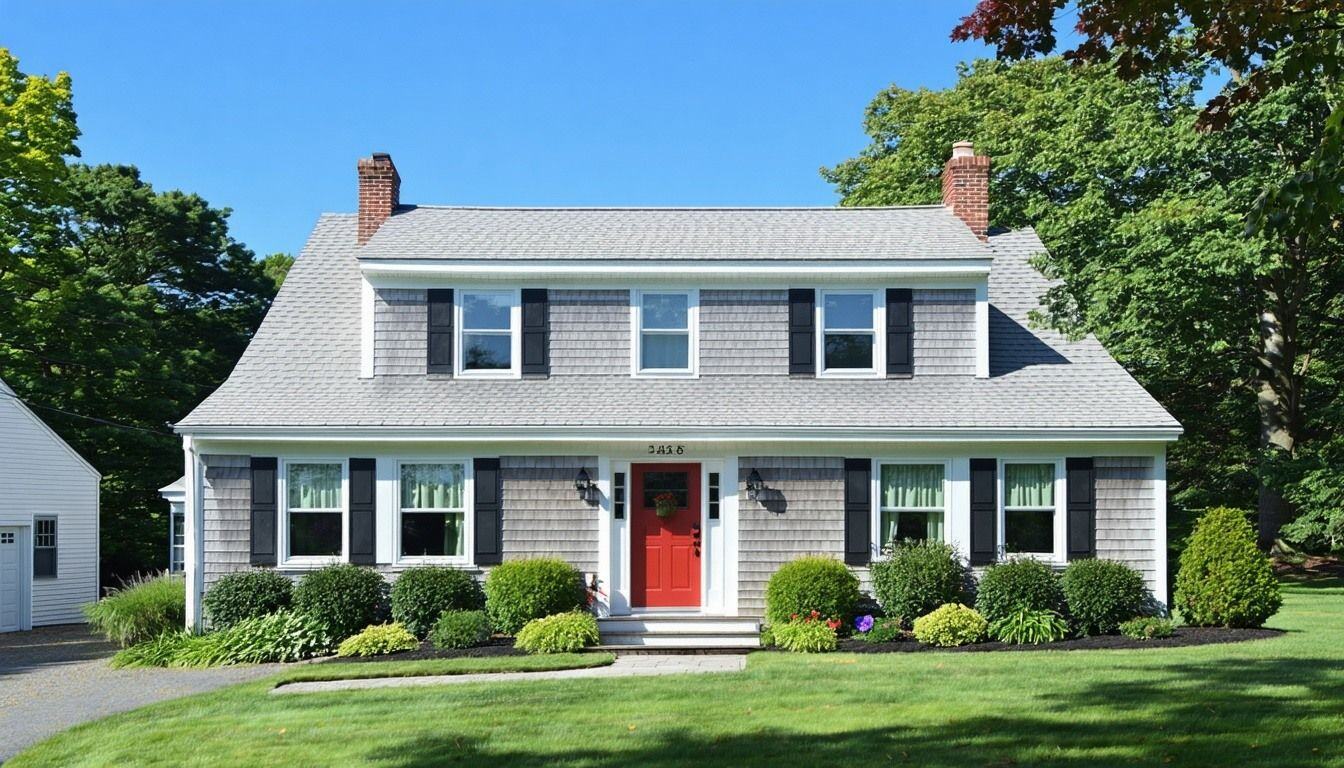3 Common Insulation Problems with Cape Cod Houses


While a Cape Cod house may seem nice and cozy, did you know this style of home performs very poorly when it comes to insulation?
Given the Cape Cod is a popular style originally built by the sea, it’s funny that they face the cold breezes coming from the ocean, but do such a bad job actually keeping the home warm.
Although the Cape Cod originated on the east coast of the U.S., this style of architecture can be found all over the country, with the same heating and cooling problems.
RetroFoam of Michigan has been insulating homes for more than 20 years, and many of them have been this style of house. With this experience, we understand what the main insulation problems are for a Cape Cod house and how to fix them.
In our continued efforts to educate homeowners, we will break down the three common insulation problems with Cape Cod homes and what can be done to make them more comfortable.
What is a Cape Cod House?
A Cape Cod house is a single-story home with a moderately steep pitched gabled roof.
This style of home originated in New England in the 17th century and found a boom in popularity in the 1930s through 1950s, according to Antique Home. The main floor is where the living room, dining room, kitchen, and a single bedroom are usually found. In some cases, there may be additional bedrooms on the second floor.
Cape Cod house characteristics, according to Antique Home include:
- Symmetrical appearance with the front entrance to the home centered.
- Steep roof with side gables.
- Small roof overhang.
- One- or 1 ½-stories.
- Wood frame with lap, shake, or shingle siding.
- The chimney is located at the gable end of the house.
- Gabled dormers.
- Multi-paned, double-hung windows.
- Shutters.
- Simple exterior ornamentation.
Now let’s get into some of the characteristics of insulation problems in Cape Cod homes
Cape Cod House Insulation Problems
The Cape Cod home resurgence came in the time of the Great Depression, so insulation was an add-on most people skipped.
This is just one of the reasons Cape Cod homes have heating and cooling problems. Now let’s take a look at the other insulation problems.
- There was no need for insulation when they were built. Most of the Cape Cod homes today were built between the 1920s and 1950s. This was during an era where the cost to heat a home was very cheap because the cost of oil was so low. Because of this, not many people thought they needed the added cost of insulation in their homes.
- Heating distribution throughout the home. This problem goes right back to the construction and the low cost of heating when the Cape Cod homes were built. In some cases, the second floor isn’t piped for heat at all. Another problem is the hot water pipes are run through the knee wall outside the attic insulation or exterior walls, which is a great way to lose heat.
- Leaky knee wall spaces. The knee wall is a short wall, usually less than 3-feet-tall, that supports the rafters of the attic or second floor. The problem isn’t the wall itself, but the space behind it that usually doesn’t have any insulation, so air leaks into and out of the space.
How to Fix Cape Cod House Insulation Problems
Since most of these homes have little to no insulation, the addition of insulation can really make a difference.
The Energy Auditing Blog recommends creating an air seal with insulation to fix these comfort and energy efficiency problems. The only material that can create a total air seal is foam insulation.
Insulating the area behind the knee wall will help with a lot of the air leakage experienced in a Cape Cod home. In some cases, we have seen houses where every area has adequate insulation, but the knee wall space has been neglected. Just insulating this space can make a huge difference, but it’s important to seal up the entire building envelope.
Spray and injection foam from the bottom to the top of the Cape Cod home will create the air seal recommended by the Energy Auditing Blog.
If you’d like to learn more about the other benefits of foam insulation in your home, check out the Learning Center on our website.
About Amanda Ringler
Amanda previously has worked as a breaking news and crime reporter, TV news producer, and editor in Flint and Detroit. Throughout her career as a journalist, she has won several awards from The Society of Professional Journalists - Detroit Chapter and the Michigan Press Association. As part of the RetroFoam of Michigan family, Amanda uses her experience as a journalist to write content that will help educate homeowners on the benefits of foam insulation. When Amanda isn’t writing, she’s spending time with her husband and rescued huskies. She also loves knitting, making art, cooking, and hosting dinner and a movie night for friends and family.

.jpg)
